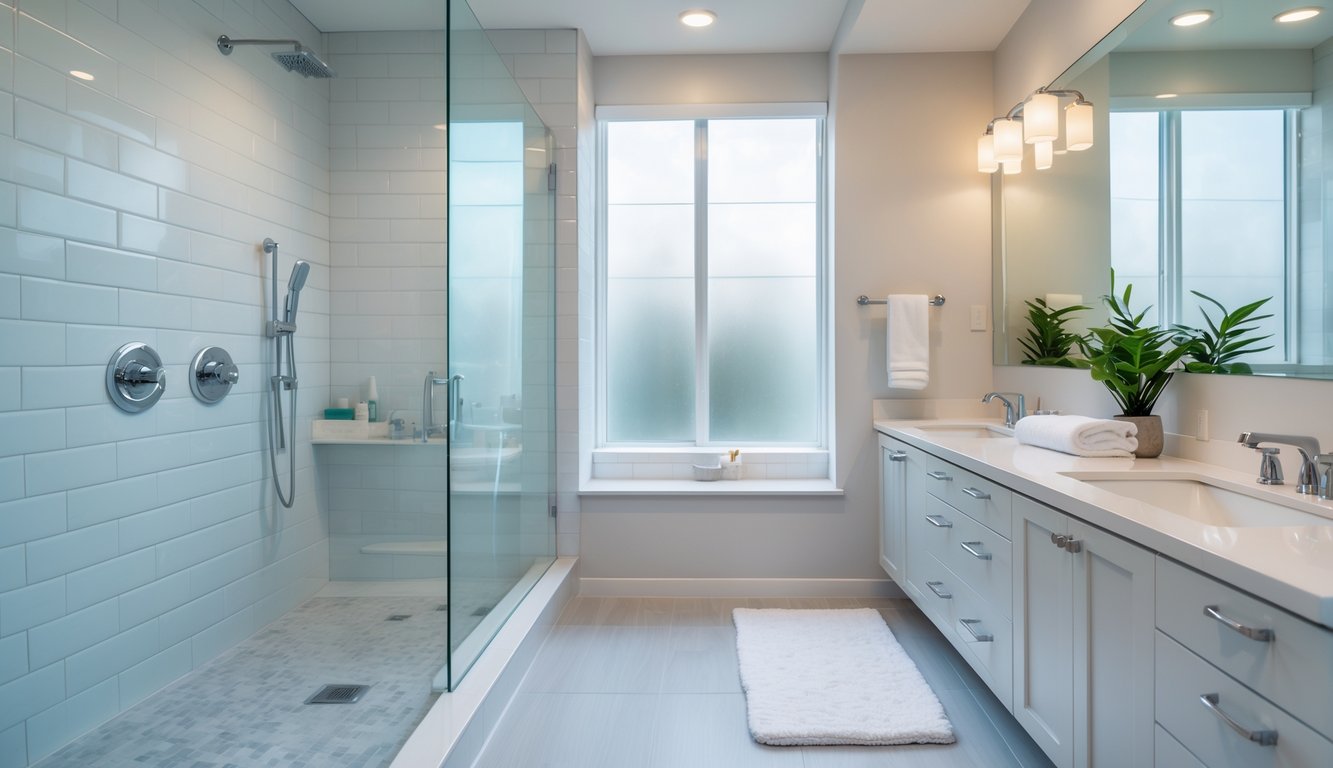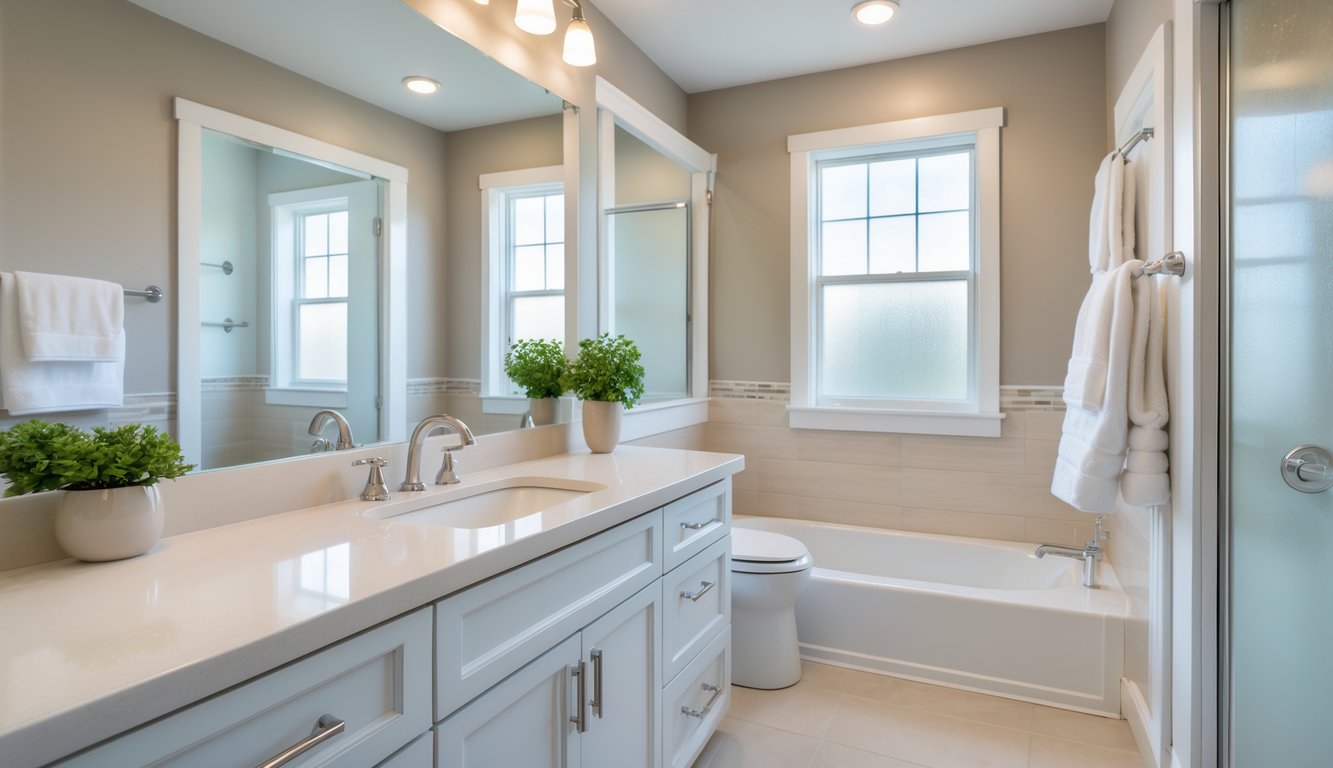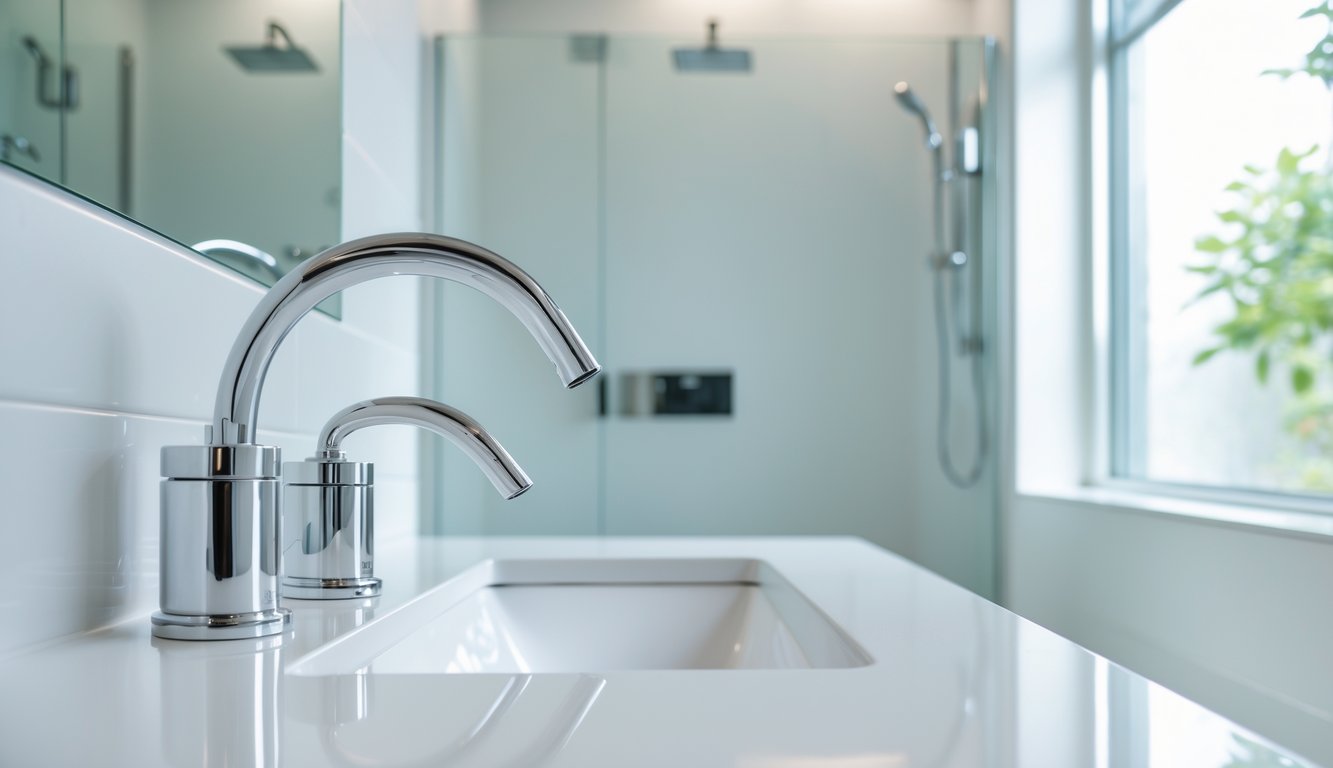
Choosing Strategic Bathroom Upgrades
Not everything’s worth it. Faucets, floors, lighting—those get noticed. Eighty-six percent of renovators upgrade faucets, 82% change floors, 81% update lighting.
I focus on the basics: water-saving toilets (buyers love that), dual flush or at least soft-close lids. Sleek, bright vanities replace those old medicine cabinets. Whirlpool tubs? Nobody uses them, and families want double sinks.
Table:
| Upgrade | Average ROI | Buyer Appeal | Worth It? |
|---|---|---|---|
| Faucet swap | 70%+ | High | Yes |
| Tile floor | 68% | High | Usually |
| Luxury tub | ~56% | Low/Medium | Rarely |
| LED lighting | 70%+ | Very high | Yes |
It’s kind of funny—$100 lighting upgrades impress more than $2,000 towel warmers. Stick to what works. One client got $20K over asking just because the lighted mirror wowed people. The fancy imported sinks? No one cared.
First Impressions: Fresh Paint and Neutral Colors

Picking a bathroom wall color isn’t just another “get ready to sell” chore. It’s sneaky—paint can make a tired room look new, even if the pipes are ancient.
Selecting Paint Colors That Sell
I tried navy blue once—looked cool in my head, but the room felt like a submarine. The last agent I talked to (the guy wears sunglasses indoors, so take it with a grain of salt) swears by warm whites and soft grays, never plain white. Beige if you’re feeling risky, I guess.
The Renovation Sells bathroom updates guide says buyers want a blank slate, so I avoid bold colors if I want top dollar. I drag paint swatches to open houses—rooms painted “Agreeable Gray” or “Swiss Coffee” always get fewer complaints. Not exciting, but buyers imagine their own stuff in there.
Oh, and paint finish matters. Satin, eggshell, semi-gloss—they all handle water differently. My painter’s cheat sheet:
| Finish | Good For | Not Ideal For |
|---|---|---|
| Satin | Bathrooms | High-abuse areas |
| Eggshell | Main walls | Wet zones |
| Semi-gloss | Trim/Moisture | Large wall surfaces |
Paint brand? Sherwin-Williams “Alabaster” sells homes faster than my neighbor’s Tesla. That’s not science, but it feels true.
Benefits of a Fresh Coat of Paint
Okay, so let’s get this out of the way: I used to think I could just clean everything and call it a day. Nope. Turns out, no matter how hard you scrub, dingy walls and crusty grout make the entire bathroom look like it belongs in a college rental. Revive Real Estate keeps harping on this “well cared for” thing—honestly, they’re not wrong. Paint does most of the heavy lifting. Faucets? Meh, barely registers.
Paint’s cheap. Like, $100 for supplies if you do it yourself, maybe $250 if you’re lazy and hire someone. Suddenly, your bathroom’s Instagram-worthy, or at least not embarrassing. I swear buyers care more about “freshly painted” than “deep cleaned.” I don’t even blame them. Yellow streaks, random splatters, weird patchy spots—gone. Neutral colors just erase years of toothpaste wars and questionable design choices.
Skip paint and every other update just disappears. I once left a teal accent wall because I thought I was edgy—my agent made me repaint it white before listing. Guess what? Buyers loved the bland white. Sigh. Sometimes it’s just about hiding the old stuff. People see “neutral” and think they can move in tomorrow, even if the pipes are ancient.
Modernizing Fixtures and Hardware

I walk into these old bathrooms and immediately spot the gold faucets—why did anyone ever think fake brass was a good idea? And those pitted chrome handles, always loose, always gross. It’s like a time machine to the worst parts of the ’90s. Fixtures don’t just “age,” they scream “no one’s cared for this place in years.”
Swapping Outdated Faucets and Handles
Last spring, I did a walk-through for a client. Leaky faucet, dented towel bar, acrylic knobs that looked like props from a bad sitcom. Swapped in a single-lever brushed nickel faucet—Moen, spot-resistant, $75 on sale. Suddenly, three offers over asking at the next open house. I don’t get it, but apparently, people love touching new stuff. The National Association of Realtors keeps putting fixture swaps near the top for ROI. Makes sense, I guess. Smooth handles, nice water flow, nothing sticky or squeaky—buyers notice, even if they pretend they don’t.
Matching hardware finish is weirdly important. I tell people: pick a lane—brushed nickel, stainless, matte black if you’re feeling bold. I once drew a table with prices and finishes for a client, but honestly, just don’t mix metals unless you want every tiny difference to glow under those brutal LED lights. Hardware symmetry is a thing. Buyers love it. Or maybe they just hate mismatched junk.
Incorporating Matte Black Accents
Matte black. I used to think it was a phase, but now I’m installing it everywhere. Towel bars, shower arms, door hinges—doesn’t matter. Buyers see matte black and think “designer.” It’s not, but let them have their fantasy. Design pros keep calling it a favorite. Maybe because it works with literally everything: wood, tile, sage green, whatever’s trending this week.
Don’t stop at the faucet. Go for the weird stuff—matte black hinges, toilet paper holder, even the pipes under the sink if they show. I’ve had agents compliment me on door hardware, which is honestly hilarious. Matte black hides fingerprints better than chrome, which makes no sense but I’m not complaining. If your bathroom’s already dark, skip it—black fixtures in a cave just look sad. But in a bright space? Matte black anchors the whole room, sometimes more than a fancy mirror.